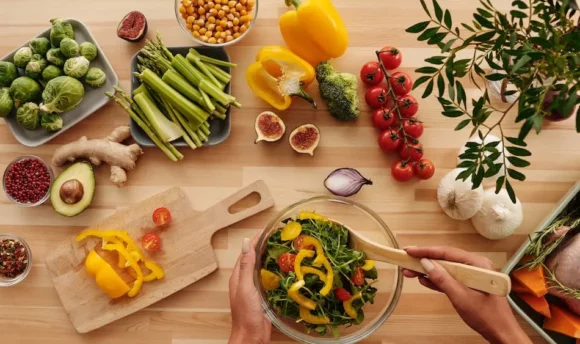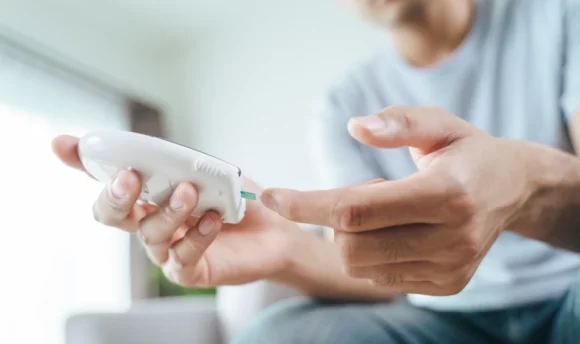Worst Foods for Diabetes: What You Should Know Before Eating These Foods
Diabetes is already difficult to live with, but having to constantly be on the lookout for food that may harm your blood sugar level makes it even tougher.

Diabetes is a debilitating disorder because of increased blood sugar levels. People with diabetes don’t get to enjoy the same foods as other people, meaning they lose out on a lot of great meals. Moreover, it can be tough to know exactly what foods to avoid.
Fortunately, we’ve curated a list of some of the most common meals and foodstuffs for people with diabetes to avoid. Most of these items have a viable, healthy alternative. If you’re living with diabetes, we urge you to read our list.
21 Worst Foods for Diabetes
For people with diabetes, the following are the worst foods to consume and should be avoided as much as possible. There are many alternatives that you can try to make your diet more diabetes-friendly.
#1 White rice
To most people, white rice might seem fairly healthy as far as starch goes. But to people with diabetes, eating a bowl of white rice is like eating a bowl of sweets.
And that’s not a wholly inaccurate description either. White rice acts a lot like sugar when absorbed into the body, increasing blood glucose levels, which can severely impact your blood sugar.
Fortunately, the solution to this problem is simple: replace white rice with whole grains, such as brown rice or wild rice. In general, white carbs should be avoided. And speaking of white carbs…
#2 White bread
White bread, like white rice, might seem fairly innocuous to the average consumer. However, it’s an especially dangerous starch source for people with diabetes.
White bread acts similarly to white rice regarding its effects on the body. Once ingested, it can raise your blood glucose levels to astronomical heights. White carbs (including anything made with white flour) and diabetes are a recipe for disaster.
Fortunately, finding a replacement is easy: eat brown bread instead of white bread. Whole-grain bread is also a perfectly viable (and much healthier) substitute. You can also try potato bread.
#3 Canned fruit
The word “fruit” is often associated with health. After all, it shouldn’t matter whether or not the fruit is fresh, canned, dried, or in fruit juice – fruit is fruit, right?
This is a particularly dangerous misconception for people with diabetes to have. While most fruit products will almost always be healthier than sweets, some can still prove unhealthy for one’s blood sugar, like canned fruit, which is often packed with heavy syrup (i.e., sugar), or fruit juice, which has no fiber and plenty of sugar.
While not as sweet, fresh fruit is far healthier and higher in fiber, which helps slow the rate at which carbohydrates enter your bloodstream.
#4 Jam and jelly
To some people, there’s nothing quite like a slice of toast caked in fresh jam or jelly. But for people with diabetes, both these items can rapidly raise blood sugar.
As with pretty much everything we’ve mentioned so far, jams and jellies are often made with a high amount of sugar. Naturally, your blood sugar levels can quickly skyrocket after just a slice or two of toast with jam.
Fortunately, because jams and jellies are so popular, there are many diabetes-friendly brands, though we would still recommend limiting the amount of jam and jelly you consume.
#5 Fried meat
Most people can admit to having a weakness for fried foods. After all, who doesn’t love french fries and potato chips?
Unfortunately, fried meat (and other fried foods) are a no-go for people with diabetes. This is because most fried foods are soaked in oil, drastically increasing the number of calories. Moreover, many fried foods are often coated in breading first, cranking the numbers up even more.
Additionally, the excessive amount of fat in these foods prolongs the effects of high blood sugar because it takes longer to digest. To avoid these issues, try preparing your fried foods in other ways, such as baking, roasting, or grilling.
#6 Processed meat
Like fried meat, processed meat is just as unhealthy despite being so appealing. Most people consume plenty of processed meat in a single day because when slapped between two slices of bread, they make for a tasty lunch.
However, the reason processed meat is so unhealthy is different from fried meat. Processed meat contains high amounts of sodium. Just two slices of the stuff contain more sodium than a bag of chips.
Sodium is a huge issue for people with diabetes because it increases your blood sugar and the risk of heart disease. Unfortunately, there’s no easy alternative to processed meat.
#7 Ice cream
No one in their right mind would ever claim that ice cream is good for you, but it’s especially dangerous for people with diabetes.
Aside from excessive sugar, most ice cream is also usually packaged with high amounts of saturated fat, which can quickly clog up your arteries. Ice cream also has a psychological effect: it activates the pleasure center in your brain, leaving you wanting more and more.
Fortunately, there are several “healthy” ice cream alternatives for you to try out. However, it should be noted that even excessive amounts of these can leave your blood sugar looking worse for wear, so consume in moderation.
#8 Sweetened cereals
Sweetened cereal is a breakfast staple because it is quick and easy to prepare. Just add milk, pour a glass of fruit juice on the side, and you’re good to go, right? Unfortunately, no, because sweetened cereals are also super unhealthy.
Blood sugar control is the most important thing for people with diabetes. Unfortunately, cereal is often high in sugar and carbs but low in fiber and protein, essential for a healthy, satisfying morning meal. Even the supposed “healthy” cereals can contain more sugar than what is healthy.
The solution is to eat more satiating breakfast meals, like eggs or sautéed greens with a serving of avocado.
#9 Sauerkraut and pickles
While pickles are a big turn-off for some people, many more enjoy them as a daily snack they can’t do without. However, while they aren’t necessarily unhealthy when eaten in moderation, people with diabetes may want to steer clear of them.
The real problem is sweet pickles containing plenty of sugar and salt. The extra sodium is particularly worrying and can easily increase your risk of heart disease.
Dill pickles are generally considered a healthier alternative, even though they are rich in sodium. In general, it’s best to avoid pickled foods altogether.
#10 Dried fruit
Just because it has “fruit” on the label doesn’t mean it’s healthy.
Dried fruit contains plenty of fiber and nutrients essential to leading a healthy lifestyle. However, because dehydration removes all the water, it is easier to eat in excess. Eating dried fruit may technically be healthier than cookies, but it’ll still cause your blood sugar levels to skyrocket.
Instead of dried fruit, eat whole fruits that are high in fiber.
#11 Pastries
Pastries are another breakfast staple that most people will agree is delicious yet wildly unhealthy. For people with diabetes, the negative effects of a pastry snack are even more severe.
This is primarily because – like white bread – pastries are made with white flour. Moreover, they’re also high in fat, carbs, and sodium. Just one cinnamon roll contains over 800 calories and more than 120 grams of carbs.
For a tasty substitute, try a whole-grain muffin topped with peanut butter or some diabetes-friendly jam to keep your blood sugar in check. You could also use white flour alternatives for baking pastries.
#12 Cereal bars
As mentioned, refined cereals can seriously damage your blood sugar, and cereal bars are no better. While they may be a quick and convenient early morning snack, they’re rich in carbs, sugar, and not much else.
Cereal bars not only contain a high amount of refined carbohydrates, but they’re also drenched in syrup and sugar to keep them bound. Of the 30 grams of carbs that most cereal bars contain, 16 are pure sugar, with only 1 gram of fiber to set it off.
#13 Flavored yogurt
While yogurt may seem like a healthy snack, most flavored yogurts will increase your blood sugar levels.
A fruit-flavored yogurt may be healthier than a bag of chips, but they often contain very little fruit and plenty of sugar and artificial sweeteners. The average flavored yogurt contains 31 grams of carbs and only 7 grams of protein.
To satisfy your yogurt craving, look for diabetes-friendly yogurt brands but be sure to read the labels – some may not be as healthy as they purport to be. Plain yogurt can also be consumed safely in smaller quantities.
#14 Potato chips
No one would ever claim that potato chips were good for you, but they’re much more unhealthy than they initially seem.
Not only do potato chips contain high amounts of sodium, and preservatives, but they’re also made with trans fats. Trans fats increase your LDL cholesterol, lower your HDL cholesterol, and increase your risk of heart disease.
For people with type 2 diabetes, trans fats are something you’ll want to avoid at all costs.
#15 Crackers and pretzels
Like potato chips, crackers and pretzels contain excessive amounts of sodium and preservatives and, of course, trans fats.
However, pretzels and crackers are also dangerous due to the amount of refined simple carbs that can spike your blood sugar level. In short, they’re a no-go for people with diabetes and greatly contribute to the risk of developing a serious cardiovascular disease.
#16 Pasta
Of all the foods to avoid, this one may be the toughest. Pasta is so ubiquitous that it’s nearly impossible to get around.
Unfortunately, pasta is also made from white flour, which, as mentioned, is seriously unhealthy. People with low blood sugar may be able to get around this, but for those with type 2 diabetes, pasta is, unfortunately, a no-go.
It gets even worse if the pasta is served in high-sodium sauce, like Alfredo sauce. This can easily give you high blood pressure over a long time due to your body’s inability to absorb the food quicker.
#17 Instant noodles
Like pasta, instant noodles can be hard to avoid, given their popularity. Unfortunately, a single packet of the stuff can easily contain a day’s worth of sodium, which can spike your blood sugar.
Unfortunately, there aren’t many easy substitutes for instant noodles, as most other “instant” products contain too much sodium and saturated fat for the body to handle.
#18 Honey
Many claims that honey is far healthier than syrup, given its “all-natural” composition. What most people don’t realize, however, is that honey is mostly pure fructose which can spike your blood sugar just as much as regular sugar will. It’s equivalent to eating high fructose corn syrup.
#19 Popcorn
Despite popcorn being made from corn, it’s often topped with artificial butter, caramel sauce, and other unhealthy foodstuffs. Even stove-top popcorn is leaden with an excess of carbs.
#20 Grits
Like popcorn, grits are made from corn, which is already high in carbs in and of itself. They contain very little fiber and protein to control blood sugar levels and should be avoided at all costs.
#21 Bananas
Bananas are a fruit, meaning they contain a healthy amount of vitamins and fiber, which are both essential for living a healthy lifestyle. However, bananas are also high in sugar.
There are a few other fruits that are high in sugar, like melons and peaches. Naturally, you’ll want to avoid eating these fruits as much as possible, though a small serving of bananas is still workable if your diabetes isn’t severe.
A Word From MD
When it comes to diabetes, maintaining control over your blood sugar is the most important thing to consider. That means eating all the healthiest foods you can in moderate amounts and at regular intervals (stick to specific meal times).
Most of the foods you should avoid include those that are high in sugar, carbohydrates, and sodium. Fortunately, these ingredients are easy to spot – just check the labels on everything you buy.
Try to maintain a healthy balance of food groups, but pay particular attention to your fiber intake – in most cases, vegetables will be your best friends. This will also aid in the weight loss process, which is very beneficial to diabetes management.
Conclusion
Living with diabetes involves extra care when it comes to maintaining one’s blood sugar levels. Unfortunately, this means being extremely cautious about the foods you consume.
Luckily, this list of foods to avoid should help you ease this process. The American Diabetes Association also has an extensive list of dangerous foods for people with diabetes so if you’re ever in doubt, consider checking out some of their resources.
Also, if you have trouble following a diabetes-friendly diet or a list of low glycemic/carbohydrate foods, we would recommend checking diabetes management apps.

















































 Select your language:
Select your language: 








